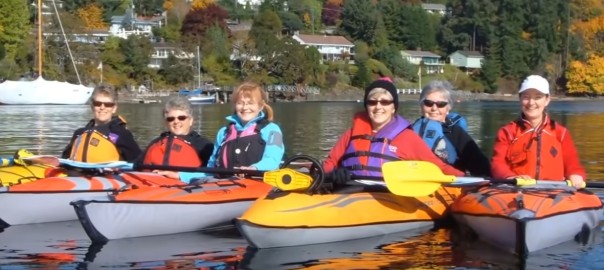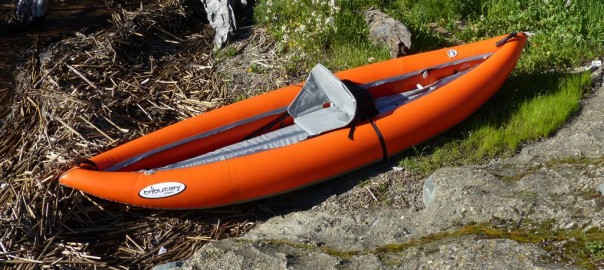Gone are the days when inflatable kayaks were simply pool toys. With recent dramatic increases in technology, today’s inflatables have evolved into everything from family recreational fun to high-tech specialized watercraft – some even rival the performance of hard shell kayaks.
An array of Advanced Elements Inflatable Kayaks
Benefits of Inflatable Kayaks
So why choose an inflatable? The biggest reasons are portability and storage.
Innova 100L Backpack for Innova Kayaks
The ability to travel with an inflatable – either tossed into the back of your car or RV, taking mass transit, backpacking into remote areas or flying around the world – is appealing to many.
Inflatables also solve storage problems – the bags and backpacks can easily fit in a closet or trunk of a car, and there is no need for cumbersome and expensive roof racks.
AquaGlide Chelan 155 HB XL Kayak for 1-3 paddlers
Many of the inflatables are lightweight – making it easier to manage – and can hold one, two, sometimes three paddlers, making it great for family fun.
AquaGlide Blackfoot 155 Angler HB XL for 1-2 paddlers
Most are rugged and incredibly stable, appealing to those nervous about the water and leary of “tippy” hardshells. Many have hulls which can take scrapes, bumps and submerged sticks and logs without a blip. And in the remote chance that you do puncture your kayak, most can be easily repaired with the included maintenance kits. Simply cut a patch, put on glue, apply pressure and let sit overnight.
Inflatable Kayak Styles and Definitions
With the number of new inflatables hitting the market, there are now many styles to choose from for a wide range of water activities – from oceans to ponds, slow moving rivers to white water or wave running.
Here is an overview of some kayak styles to consider as well as some of the terms you might not be familiar with:
AquaGlide Klickitat 125 HB XL Self-Bailing Inflatable Kayak for 1-2 paddlers
Self-bailing kayaks: These are typically used in whitewater situations. Self-bailing kayaks have numerous ports – or holes – located in the bottom of the kayak. When in a fast-moving whitewater situation, this allows water to enter the kayak and pass back out, ensuring the boat doesn’t fill up. Expect a wet ride. Conversely, if you are on calm water, water will come in through the floor ports unless the kayak has plugs that can be opened or closed. Many self-bailers don’t have tracking fins, meaning they may not perform as well in flat water.
Advanced Elements StraitEdge 2 for 1-2 paddlers
Sit-on top kayak: An open design kayak. This is great for people who have difficulty getting in and out of an enclosed shell, those who tend to feel claustrophobic, and for those in warmer climates. Conversely, water will splash


You must be logged in to post a comment.